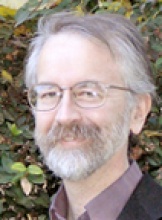
Brent Fultz received his undergraduate degree from MIT and his Ph.D. from U. C. Berkeley in 1982. He was a Presidential Young Investigator, and received an IBM Faculty Development Award, a Jacob Wallenberg Scholarship, and won the TMS EMPMD Distinguished Scientist Award in 2010. Brent Fultz has been announced as the winner of the 2016 William Hume-Rothery Award of TMS. He serves on review boards of the Advanced Photon Source and the NIST Center for Neutron Research. He consulted for Everett Charles Technologies, the Defense Science Board, was a member of the Science Advisory Board of Actium Materials and Contour Energy, and is now on the Science Board of the Materials Project. Fultz has authored or co-authored well over 300 publications. Brent Fultz is the first author of a graduate-level textbook on diffraction and microscopy of materials (now in its fourth English edition, first Russian edition, and under translation into Chinese). More recently, Fultz authored a graduate-level textbook on phase transitions in materials that unifies concepts from traditional materials science and from condensed-matter physics.
At the heart of Fultz's interests is the thermodynamics of atoms in materials, and the kinetics of atom movements. A main topic of Fultz's research is how atom vibrations in solids affect the entropy and thermodynamic stability of materials. Vibrations are the main source of entropy of solid materials, and measuring and calculating their spectra is a major effort of Fultz's group. Recent work has focused on behavior over a broad range of temperature, where phonons interact with other phonons, and with electronic excitations. Fultz's group has worked on materials that store hydrogen and lithium for many years. One current effort is focused on understanding the interactions of hydrogen molecules with surfaces, with the goal of learning how to optimize the hydrogen-storage potential of new materials that store hydrogen or other gas molecules by adsorption interactions. For materials that store lithium or sodium ions, Fultz's group found an opportunity to use nuclear resonant scattering on materials at sub-megabar pressures to measure the atom distortions that occur as an electron hops between adjacent ions. The process of "small-polaron hopping" is the source of electrical conductivity of many battery materials that are otherwise insulators at low temperatures. Understanding polaron dynamics should open possibilites for many more electrode materials in rechargeable batteries.
